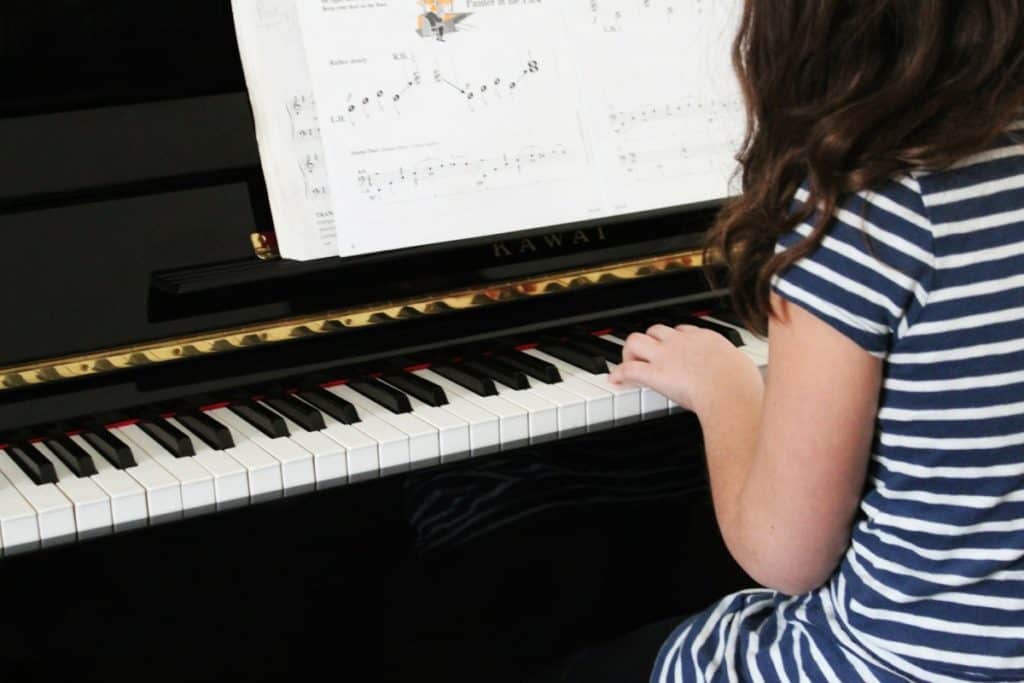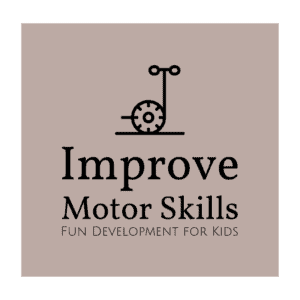The piano is one of the most popular musical instruments that kids start to play at a relatively young age. But what effect does it have on the child’s fine and gross motor skills?
Playing the piano improves both fine and gross motor skills. According to the research by Eugenia Costa-Giomi, kids that were playing the piano weekly for two years improved their fine motor skills significantly more than the ones who did not.

It is emphasized in the same research that the difference only came up after two years of playing, which suggests that it takes time until the playing habits translate into better fine motor skills.
Similar findings are brought out in another study which suggested that playing the piano improves fine motor activities in children who have had impairments to hand motor functions due to some damage to their developing brain.
It’s good to know that research is behind you, but to be honest, most of us know this without these sophisticated papers – every activity that needs the fine movement of the fingers will improve the dexterity and accuracy of these movements. The same goes for gross motor skills, e.g. putting effort into your posture while playing, will strengthen your core and improve your posture.
So keep practicing and your motor skills will also improve. And read on to learn about how exactly playing the piano benefits motor skills.
How Does Playing the Piano Improve Motor Skills?
In order to achieve mastery in playing the piano, you must perfectly coordinate your eyes, hands, fingers, and feet. As playing requires all of these steps, it also develops these skills further. The more you play, the better you get. That’s just common sense and the way things work.
But there are some more specific areas that develop really well when you take up the piano.
Hand-Eye Coordination
When learning to play the piano, you’ll have to concentrate really hard to press the right key at the right time. Your eyes already see which key you want to press but your fingers won’t just catch up. Luckily this will improve as you play. At some point, playing will become semi-automatic as your awareness of both your own body and muscles as well as of the piano improves, so a lot of the movements will come from ‘muscle memory’.
Finger Strength
If you have ever played the piano, you know that the keys don’t move very easily. You need to push them relatively hard to get the sound out of them. That’s because it’s a mechanical ‘machine’ inside the piano that produces the sound and it needs a mechanical push to make it work.
This means that it won’t be easy to start playing and your fingers could hurt at first, but as you progress and adapt, the small muscles in your fingers will get stronger and stronger.
Touch Sensitivity
The keys of a piano are very sensitive to the strength of the touch. If you press the keys softly, the piano will pay quietly, but if you press them with a quick and strong press, that’s also what you can expect from the sound. So you can play the piece with alternating intensity – there are softer and stronger parts in each piece.
This gives the kids a great opportunity to explore and understand how the power they place on the keys through their fingers affects the outcome.
Movement Speed of Fingers and Hands
When you start playing, you will practice easier exercises and pieces with a slower tempo that won’t require very fast movements from your fingers. But as you learn, you’ll get a better understanding of where each of the keys is positioned, and moving between them becomes faster and faster.
This is how you could play with just a little practice 🙂
Coordination of the Hands (Bilateral Coordination)
When learning, you start playing with one hand but relatively soon you’ll bring in the second hand. Aaaaghh.. It’s a mess at first. Trying to tell your hands to keep playing their own separate tracks seems impossible.
But it’s not, it’s learnable. As is putting together Lego pieces by a toddler or spreading jam on a slice of bread by a young child. All of these activities require and improve the person’s bilateral coordination that allows one to move and coordinate both sides of the body separately.
Core Muscles
Every piano teacher will tell you that body posture is really important when playing the piano. You’ll need to sit with a straight back, shoulders relaxed, neck aligned with your back. It won’t be easy as all of us are a bit lazy and crouching tends to be in our blood when we don’t pay attention to it. With practice, this bad habit can be broken so your core muscles will strengthen and your posture will improve.
Which Muscles are Used when Playing the Piano?
Playing the piano requires action from multiple muscles mainly in your fingers and hands, but also in arms, legs, feet, and torso. The biggest load for beginners is on the flexor digitorum and lumbrical muscles, while more advanced players are able to make more use of the palmar and dorsal interossei muscles.
These are the specific muscles that work the most when playing the piano:
| Muscle | Location | Main action | Supporting actions |
| Flexor digitorum profundus muscle | Forearm | Flexing the fingers at all three joints (metacarpophalangeal and both interphalangeal joints). | Flexing the wrist. |
| Flexor digitorum superficialis muscle | Forearm | Flexing the fingers (excluding the thumb) at the two joints closest to your palm (metacarpophalangeal and proximal interphalangeal joints). | |
| Extensor digitorum muscle | Forearm | They create the ‘pull’ action off the keyboard once the notes are played and you need to prepare for the next ones. | Extending the wrist. |
| Lumbrical muscles of the hand | Hand | Flexing the fingers at the joint nearest to the palm (metacarpophalangeal joint) and extending at the two joints nearest to the fingertips (both interphalangeal joints). | |
| Palmar interossei muscles | Hand | Adducting the fingers towards the middle finger (excluding the thumb). | Flexing the fingers at the joint nearest to the palm (metacarpophalangeal joint) and extending at the two joints nearest to the fingertips (both interphalangeal joints). |
| Dorsal interossei muscles | Hand | Abducting (spreading) the fingers 2-4 (index, middle and ring fingers). | Flexing the fingers 2-4 (index, middle and ring fingers) at the joint nearest to the palm (metacarpophalangeal joint) and extending at the two joints nearest to the fingertips (both interphalangeal joints). |
If you are interested in more details about how different hand and arm muscles are used while playing the piano, read this helpful article from Jazclazz.
What are the Real-Life Benefits from Playing the Piano
There are multiple benefits in daily life from playing the piano. Stronger fingers help you with carrying heavy shopping bags, improved hand-eye coordination helps to quickly react to a ball being thrown at you and catch it, and better bilateral coordination supports you when crafting animals from playdough with your kid.
The list goes on, as almost everything you do in your daily life is related to fine motor skills. By playing the piano and improving these skills, you’ll be able to be more accurate and precise in anything you do with your hands.
Besides fine motor skills, playing has real-life benefits on gross motor skills as well. As playing requires you to sit straight and focus on your posture, playing can be really good for your posture and core muscles. But only if you listen to your teacher and keep your back straight and shoulders relaxed.
